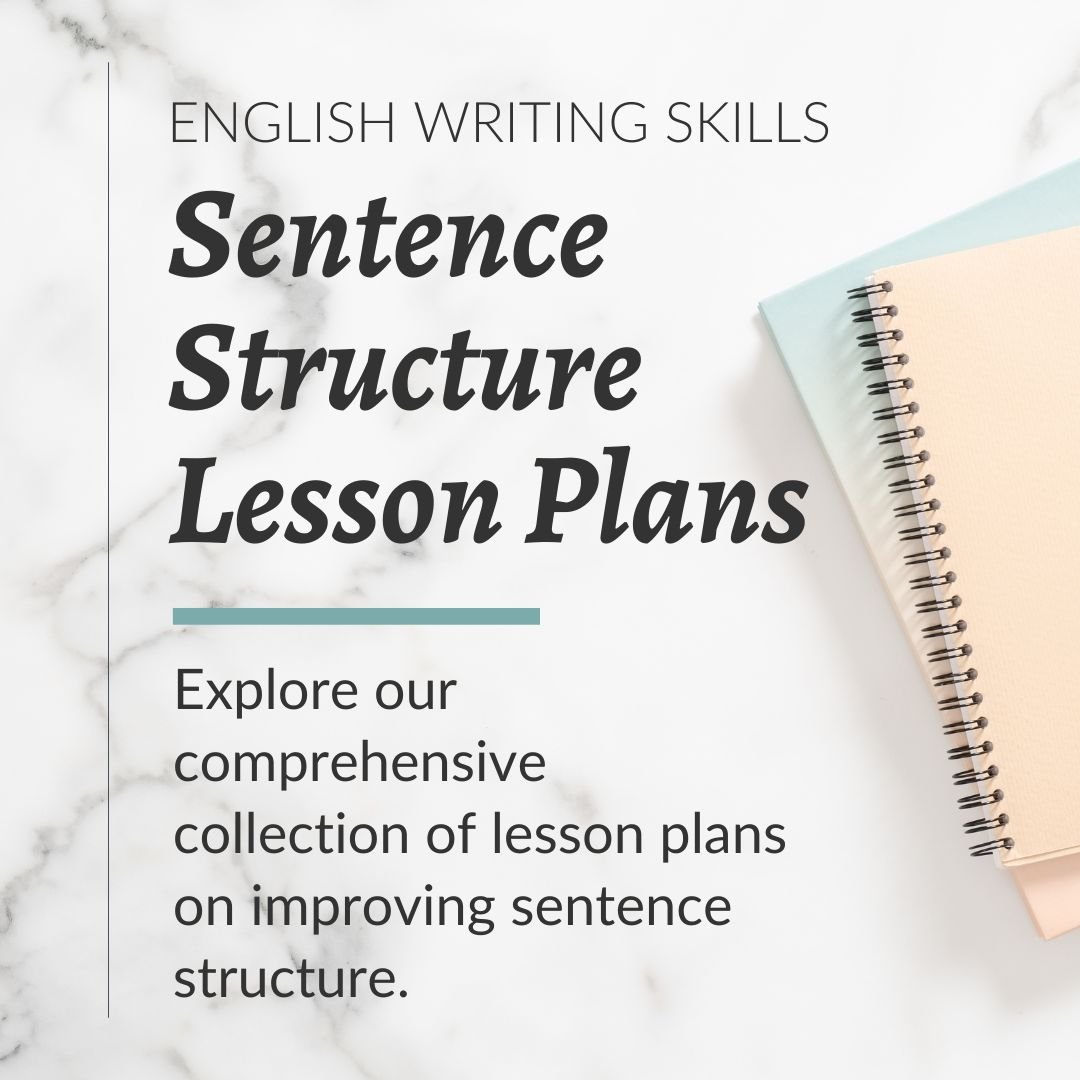Your 5-Step Guide to Better Writing in English
If you’re like almost every English learner I know - and if you’re like me, someone who speaks English as their first language - you want to express yourself more clearly and effectively when writing in English, but you don’t know how to get there.
Maybe you don’t know how to get there because you’re not sure what clear and effective writing in English looks like.
Maybe you don’t know what your actual issues with writing are.
Here’s the truth: We all want to express ourselves better in writing because writing is not only an essential tool for communication in English; it’s also a highly valuable skill.
Today, let’s talk about five steps you can take to express yourself better when writing in English:
Identify your problems with writing in English.
Get specific about your writing goals.
Edit your writing with an open mind.
Edit other writing.
Create a schedule for your regular English writing practice.
Because, friend, it’s time to move past the idea that writing is an inaccessible, unattainable skill. If you have the desire, a little bit of extra free time, and an open mind, you can - and will - learn to express yourself with more clarity and efficacy.
So, if you’re ready to read, learn, and put these steps into action, let’s go ahead and get started!
Better Writing In English
Master the most challenging sentence structures in English: Compound & complex sentences, conditionals, the passive voice, relative clauses and reported speech.
Tips for Better Writing in English
1. Identify your problems with writing in English
The best way to diagnose your problems with writing in English is to find something you’ve written recently, like an email, social media post, or journal entry.
And if you haven’t written something in English recently, no problem! You can write something now.
Keep in mind: This isn’t the same thing as editing. This is about finding an issue or obstacle that keeps coming up for you when you write in English.
Now let’s take a look at just a few examples of issues you might be having when you write in English. Do any of these sound familiar to you?
Grammar issues
You’re confused about when you should use the present perfect or past simple.
You don’t know when you should use the passive or active voice.
Prepositions are tripping you up!
Here’s a quick review of a few grammar points that may be holding you back in your writing.
With the present perfect and past simple, it’s all about time. You use the present perfect when you want to talk about actions or events that happened in an unfinished time or have been ongoing, and the past simple for actions or events that happen in a finished, specific time.
It’s generally better to write in the active voice. In the active voice, a sentence begins with the subject (the actor or doer) of the sentence, as in: “Leah ate dinner.”
The active voice makes more sense when you read it and makes your writing more energetic and confident.
But if you’re writing in a formal, academic, or scientific context, or if you want to focus on the object of the sentence, it might be more acceptable for you to use the passive voice, in which the object takes the place of the subject: “The dinner was eaten by Leah.”(If you need a review of this point, you should check out this Ultimate Guide to the Passive Voice.)
It can be hard to get prepositions right. Some general rules can help you with prepositions of time, place, or movement, but knowing the rules doesn’t always guarantee success.
So what can help you? Don’t focus on learning the prepositions themselves or prepositional phrases, like “in the house” or “at the store.”
Instead, try practicing with common preposition combinations such as “disappointed in,” “satisfied with,” or “full of.”
And when you learn new vocabulary, it’s important to learn new words and phrases with the preposition from the beginning. English prepositions often don’t translate correctly from another language, so it’s important to learn the common preposition combinations at the start so that you don’t have to translate from your native language.
Use these combinations in your writing, and, as you re-read, if you notice certain combinations that don’t sound right to you, underline them, and make it your goal to work on those problematic preposition combinations.
Style issues
You use a mixture of tenses in a way that doesn’t make sense, and it’s hard to tell if you’re writing the past, present, or future.
You use the same words or expressions over and over.
You sound too formal or not formal enough.
These issues are extremely common, and here are some ways you can address them:
If you want to tell a story or anecdote that happened in the past tense, make sure that all of your verbs are in agreement.
For example, if you want to tell a story about your worst travel experience, it makes sense to tell it in the past, but you can also tell it in the present tense if you want to make it feel more immersive and exciting.
Just make sure that you commit to one basic tense - past, present, or future - and any forms - such as simple, perfect, or continuous - within those tenses. And if you need to change tenses, make sure that it makes sense within the context and framework of your writing, as in this example: “I’m writing this email to tell you the story of my wild experience in Portugal. It all started…”
You can use different tenses to show a shift in time, but when you’re talking about the past, try to stay in the past.
If you rely too much on the same words or expressions, you might have a vocabulary issue. This doesn’t mean that your vocabulary isn’t large enough; it’s just that you might not feel comfortable using some new words or expressions.
If you notice a specific word or phrase that you’re repeating too much, underline or highlight it. You can use a thesaurus to find synonyms as long as they make sense and you’re using them correctly.
And how do you build your vocabulary in general? Use a website like Quizlet to quiz yourself on new words and phrases instead of memorizing them, and commit to practicing new words and their collocations in your writing.
If you feel your tone is too formal when you’re writing in English, try looking at your verbs first. Do you use phrasal verbs or their one-word versions?
For example, would you say, “I can’t contain myself when I have something to say.” OR “I can’t hold myself back when I have something to say.”
Using the one-word versions of phrasal verbs can make your writing sound more formal or awkward.
And, again, check your use of the active or passive voice. The passive voice will make your writing sound more formal, too.
If you feel your writing doesn’t sound formal enough, check for any expressions, idioms, or slang that you think might not belong in a formal context.
Also, in most formal, academic writing, you’ll want to use the third person and avoid the first person - using “I” or “we” - as well as the use of contractions - words such as “there’s” “he’d” or “they’ve.”
Sentence and paragraph structure issues
You have a hard time with adjective order.
Your sentences are all too simple or too complicated, and you rely too much on one kind of sentence structure.
Your writing doesn’t flow because you have difficulty with transitional words and phrases.
Here are some things you can do to fix your issues with sentence and paragraph structure:
When we use more than one adjective in front of a noun (and you really shouldn’t use more than two!), these are the general rules we follow:
Adjectives that describe a general opinion, such as nice, good, or terrible, go first.
Adjectives that describe a specific opinion - that can only describe specific things - such as the words smart, delicious, attractive, or awkward, go next.
Descriptive adjectives, like yellow, long, or American, go right before the noun. So you can have a “nice, attractive neighbor,” but not an “attractive, nice neighbor." And you can have a “tall, American friend,” but not an “American, tall friend.”
Varying your sentence structure makes your writing much more interesting to read. To vary your sentence structure, pay attention to the kinds of sentences you use. You might be using too many.
Simple sentences: One independent clause with at least one subject and verb: “Nora wrote a book last year.”
Complex sentences: One independent clause + one dependent clause (or the other way around): “Even though she was really busy, Nora wrote a book last year.”
Compound sentences: Two independent clauses joined by a coordinating conjunction such as and, or, but, or so: “Nora wrote a book last year, but I quit my job.”
Compound-complex sentences: Two independent clauses + one dependent clause: “Even though she was really busy, Nora wrote a book last year, but I quit my job.”
Try expanding on your simple sentences by connecting them with other sentences to make a compound or complex sentence. You can also make it your goal to start writing compound-complex sentences with less fear.
Transitional words and phrases link ideas together, make your writing flow, and engage your reader. You can use transitional phrases to:
| FUNCTION | PHRASES | EXAMPLE |
| Show cause and effect | So, because of that, as a result... | She worked hard, and because of that, she got promoted. |
| Clarify something | In other words, basically, in simple terms... | I think it’s time to arrange a meeting. In other words, Let's talk. |
| Give an example | For example, for instance, as in, such as... | They are a really social couple. For example, they belong to five different social groups. |
| Emphasize something | Most importantly, more than anything, above all, after all... | Reading can do so many things for you, but For example, it can help keep your mind sharp. |
| Express contrast | But, however, though, on the other hand... | He says he doesn’t want a dog right now, but, he has some extra money and time. |
These aren’t the only examples of ways to use transitional phrases, but if this is a problem area for you, I recommend practicing these and focusing specifically on these as you work to improve your writing.
I recommend keeping a couple of writing reference books on hand so that you can quickly address these and any other issues you might have.
Two of my favorite writing and punctuation books are Strunk and White’s Elements of Style by E.B. White and William Strunk and Eats, Shoots and Leaves by Lynne Truss, but you should find any reference book that works best for your writing needs and interests.
2. Get specific about your writing goals
Like language learning in general, writing in English is about figuring out what you want to do with your writing. And in order to do that, it’s a great idea to think about and set long-term goals.
Set long-term writing goals to make more progress
How can you do that? I recommend setting a SMART goal.
SMART stands for Specific, Measurable, Attainable, Relevant, and Time-bound. You can apply this system to your life goals, too, but it happens to work great for managing your language and writing goals.
Set a specific goal by figuring out precisely what you want to do with your English writing. It’s important to avoid vague language, like: “I want to write better emails.” Here are some examples of specific goals.
I want to be able to:
Write an email to a coworker without using Google Translate.
Fill out one job application for my dream job.
Write a C.V., resume, or cover letter.
Write a script or outline for a work presentation.
Write a post about my favorite self-care routine on social media.
Write a short story about one of my childhood memories.
Answer a question on Quora or Reddit that I am knowledgeable about.
Make the goal measurable by giving yourself a rubric or way to measure your work. This isn’t about grading yourself; it’s about finding concrete ways to track your progress. It can also help you to be realistic and avoid discouragement. For example:
I want to write an email to a coworker without using Google Translate, and I want it to have fewer than five mistakes.
I want to write an outline for a work presentation using five new expressions I learned from my English teacher.
I want to write a post about my favorite self-care routine on social media, and I want to use three phrasal verbs that I have struggled with in the past.
Do you see how these goals give you a clear way to measure your progress? And do you see how this kind of system is more about progress than perfection?
Create an attainable goal by being honest about your abilities, resources, interests, and time. Avoid setting a goal like “I want to be able to write perfect emails in three months “ or “I want to start a successful blog in English in six months.” I’m not saying that you can’t do it, but you might be setting yourself up for discouragement or disappointment. Here are some examples:
I want to write a short, simple email to a coworker without using Google Translate, and I want it to have fewer than five mistakes.
I want to write an outline for a ten-minute work presentation using five new expressions I learned from my English teacher.
I want to write a two hundred-word post about my favorite self-care routine on social media, and I want to use three phrasal verbs that I have struggled with in the past.
How do you make the goal relevant? You should relate it to your own needs, interests, or lifestyle. For example, if you work in IT and you want to improve your writing for work, maybe the best way for you to use your time isn’t by writing about a story from your childhood (unless you really, really want to!) For example:
I rely on email a lot for my job, so I want to write a short, simple email to a coworker without using Google Translate, and I want it to have fewer than five mistakes.
I want to start giving more presentations at work, so I want to write an outline for a ten-minute work presentation using five new expressions I learned from my English teacher.
I eventually want to become a lifestyle blogger, so I want to write a two hundred-word post about my favorite self-care routine on social media, and I want to use three phrasal verbs that I have struggled with in the past.
Finally, make your goals time-bound by giving yourself a realistic deadline. For example:
I rely on email a lot for my job, so, by the end of this month I want to write a short, simple email to a coworker without using Google Translate, and I want it to have fewer than five mistakes.
I want to start giving more presentations at work, so I want to write an outline for a ten-minute work presentation using five new expressions I learned from my English teacher, and I’ll give myself the deadline of two weeks from Saturday.
I eventually want to become a lifestyle blogger, so I want to write a two hundred-word post about my favorite self-care routine on social media, and I want to use three phrasal verbs that I have struggled with in the past, and I want to post it on September 1st.
Once you’ve used this system to assess your goals, write them out. I mean, you’re trying to practice writing, aren’t you? Why not start in the goal-setting stage?
Set short-term goals for every piece of writing
And in the same way that your writing journey needs a destination, every piece of writing needs a goal, too, in order to be effective.
What makes writing effective? Simply put, effective writing achieves the thing you, the writer, want it to achieve. So, to express yourself better in your writing, you have to know precisely what it is that you want to convey.
Let’s be clear: Effective writing in English is not about using academic language, long complicated sentences, or writing like a “native speaker.”
American novelist and nonfiction writer Anne Lamott says, “Writing is about hypnotizing yourself into believing in yourself, getting some work done, then unhypnotizing yourself and going over the material coldly.”
So, when you approach any piece of writing, you can ask yourself a few of these questions, depending on how relevant they are:
What questions do I want to answer?
What do I want the reader to learn?
What problems do I want to solve?
What thoughts or information do I want to share?
What actions do I want the reader to take after reading this?
For some kinds of writing - like work emails, messages, comments on social media - that answer is so automatic and straightforward that you will ask and answer this question without even thinking about it.
But for other kinds of writing - like social media posts, articles, essays, or press releases, to name a few - you should take the time to think this through before you write.
If you’re like me, and you’re the kind of writer that sometimes likes to “let things flow” out of you before you overthink, well, that’s why we read, re-read, edit, and proofread.
3. Edit your writing with an open mind
I know this step sounds obvious, but let’s be honest: It can be hard to edit your writing because you have to confront your mistakes, and this might frustrate or discourage you.
Here’s what I tell myself.
“You have to make something bad so that you can make something better.”
And if you don’t trust me, take the advice of Ernest Hemingway, who said, “Write drunk. Edit sober.”
Okay, so, you don’t have to write drunk, but you do have to accept that mistakes are a necessary part of the writing process. So, let’s look at some tips and tools you can use during the editing process.
If you can avoid it, don’t edit your writing right after you finish it; you’re still too passionate about it and close to it. You’ll be much more “sober” and objective if you leave your writing for at least one day before you edit.
Read it once, silently, with a pencil or pen to mark any mistakes or things you want to change.
Ask someone you trust to read and edit it, like an English teacher or language partner. They are going to be much more objective about your writing than you are! And they have a different perspective that will add value to your writing.
Once you’ve read it through, use Grammarly to give it another check. The great thing about this tool is that you can use it as a Safari or Chrome plugin, and it will automatically point out errors in your emails, direct messages, or documents.
Read it out loud. How does it flow? Does anything sound awkward? Does it sound like something you would say? Reading things out loud can help you catch mistakes or subtle issues you didn’t notice before, especially if you learn better by listening.
Use a tool like the Hemingway Editor app to edit your documents for readability. If sentence structure is an issue for you, I highly recommend this app which will highlight any sentences that are too complex or difficult to read. This desktop app will also search your document for the passive voice, unnecessary adverbs, qualifiers such as “perhaps” or “maybe,” or words that are too formal.
An editing platform like Autocrit is excellent for fiction or nonfiction writers, and you can even use it to compare your writing to the writing of famous, published authors.
4. Read and edit other writing
If your problem is that you don’t know what effective writing looks like, sharpen your skills and train your eye to look for good (and not-so-good) examples of effective writing. The best writers are the ones who read and who pay close attention, so start paying more attention to any and all English writing you can get your hands on.
Take a closer look at emails from your coworkers. Edit the captions on social media posts that catch your attention, or use forums like Reddit or Quora to find posts you want to edit.
Here are a couple of things you can do when you find examples of writing that you like and some that you want to edit:
When you find something you want to edit, take a screenshot of it and create two folders or files on your computer:
Create a swipe file of good writing examples. A swipe file is something copywriters, content writers, or creative directors use when they find examples of effective writing that have been tested and proven effective. But you can use this for any kind of writing that inspires you!
Then create an edit file for writing that you want to edit and improve, and make a commitment to edit these pieces at least once a week.
Copy and paste any text that you want to edit into a Word or Google document. Start with something short at first, and in the beginning, try to edit something new every week.
This isn’t about learning how to copy or plagiarize other kinds of writing. It’s something that the best writers do to hone their own writing skills.
The prolific American novelist Stephen King said, “If you don’t have time to read, you don’t have the time (or tools) to write. Simple as that.”
Even if you have just ten to fifteen minutes every day to write, making a commitment to yourself will do wonders to improve your writing and confidence in your ability. Which brings me to Step Five...
5. Create a schedule for your regular English writing practice
Did you notice how step three doesn’t just say “practice?”
That’s because, in order to improve your writing, you have to get used to the idea of regular practice. I’m sorry to say this, but you can’t get around that step.
The best way to practice, though, is to make it a part of your scheduled daily or weekly routine. And you can keep the SMART goals you’ve created in mind when you create your schedule.
If you don’t like the ideas I suggested in Step Four, maybe you can give these a try:
Use the Pomodoro Technique and commit to writing in an English journal every week for twenty-five minutes. It’s important to set a timer for yourself, especially if you’re feeling unmotivated. After the timer runs out, take a five-minute break, and if you want to keep writing, repeat this cycle three more times. After this, take a fifteen-minute break before you get back to it, or give it a rest for the day.
Use daily writing prompts to inspire your writing if you don’t know where to start. This is a good place to start if you’re looking for nonfiction prompts, or you can even use this writing prompt account on Twitter if you’re looking for inspiration for your fiction.
Try to answer a question on Reddit or Quora in English at least once a week about any topic that interests you or that you have knowledge about.
Follow us on Instagram or Facebook and respond to our posts or stories with a question or comment when we write a new post.
Whatever goals or steps you create on your journey to express yourself better in writing, remember that your writing journey is your own. Keep a beginner’s mind and go easy on yourself! In the end, only you know what works best for you to succeed.
But when you do succeed, don’t hide your writing away! Share it with the world, and share it with us. We’d love to read it!
About the writer
Marta is an online ESL teacher who works with students from around the world. As a writer, language nerd, and content contributor for In English With Love, her mission is to empower English learners with knowledge and positivity.
















